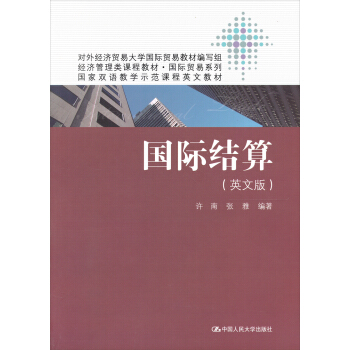

具体描述
内容简介
《经济管理类课程教材·国际贸易系列·国家双语教学示范课程英文教材:国际结算(英文版)》是2010年度国家双语教学示范课程“国际结算”的英文教材。本书的一大特色在于,它既可以独立使用,也可以与该建设项目的另一工作成果《国际结算》(中文版)配套对应使用。这在目前国内已出版发行的《国际结算》教材中尚属凤毛麟角。《经济管理类课程教材·国际贸易系列·国家双语教学示范课程英文教材:国际结算(英文版)》由国际结算导论、国际结算中的票据、国际结算方式、国际结算中的单据、国际结算业务管理五大模块组成。导论模块重点介绍本书的基本框架、学习内容和基本理论;票据模块展示了汇票、本票、支票三大票据的法理、构成要素、票据行为;结算方式模块介绍了传统的结算方式汇款、托收和信用证后,根据当前国际结算业务信用证结算比例逐步下降,商业信用结算占比逐年增大的新特点和新趋势,介绍了保函、备用信用证、保理、福费廷等新型、带有融资特性的结算方式。单据模块先阐述和分析了汇票、基本商业单据商业发票、运输单据、保险单据,然后对其他单据做了系统而深入的介绍与分析。为避免与票据模块重复,本模块主要是从单据审核的角度介绍了汇票。审单审证作为国际结算课程的难点,在第十一章有专门介绍。本书还对国际结算融资、国际结算业务风险等内容进行了分章阐述。教材涵盖了包括INCOTERMS2010,UCP600,ISBP681和URDG758等在内的国际结算领域最新的国际惯例和规则。作者简介
许南,男,经济学博士,湖南师范大学商学院副教授,硕士研究生导师,MBA导师,“国际结算”国家双语教学示范课程负责人;“挑战杯”全国优秀指导教师,湖南省青年骨干教师,湖南省青年教师教学能手;曾在德国福伦斯堡大学作为访问学者研修一年,为德国高校本科生和硕士生用英语讲授“金融学导论”、“国际贸易融资”课程。任教课程被遴选为校文化素质课精品课程、校双语教学示范课程、校精品课程和国家双语教学示范课程。出版专著2部,在《管理世界》、《财贸经济》、《教育与经济》、《金融论坛》等权威和重点刊物发表学术论文20余篇,多篇论文被中国人民大学报刊复印资料全文转载。主持国家本科教学质量工程项目1项,主持省社科基金项目、省软科学项目、省教育科学规划项目、省教学改革研究项目、省研究生教改项目7项,主要教学科研领域为国际贸易学和国际金融学,主要研究方向为国际支付、国际贸易融资、商业银行跨国经营与管理、FDI与跨国公司投资。张雅,女,经济学硕士,讲师,近年一直在高校从事国际结算、国际贸易等相关课程的教学与科研工作。主研国家本科教学质量工程项目1项,主持和主研省社科基金、省高校教学改革研究项目、省教育厅科研项目6项。参编高校联编国际经济与贸易专业“十二五”规划教材1部。获校青年教师教学能手、优秀教学质量奖等多项教学奖励。主要研究方向为国际贸易、国际结算、商务英语。
内页插图
目录
ContentsChapter 1 Introduction
1.1 Definition and Contents of International Settlement
1.2 Classification of International Settlement
1.3 Emergence and Development of International Settlement
1.4 Role of Bank in International Settlement
1.5 Related International Customs and Practices
1.6 The Banking Network in International Settlement
Chapter 2 Negotiable Instrument
2.1 General Introduction of Negotiable Instruments
2.2 Bill of Exchange
2.3 Promissory Notes
2.4 Cheque
Chapter 3Remittance
3.1 Introduction of Remittance
3.2 Basic Parties to Remittance
3.3 Types of Remittance
3.4 Reimbursement of Remittance
3.5 Cancellation of Remittance
3.6 Application of Remittance
Chapter 4 Collection
4.1 An Overview of Collection
4.2 Parties to Collection
4.3 Types of Collection
4.4 Responsibilities and Obligations under Collection
4.5 Points for Attention under Collection
4.6 International Customs and Practices for Collection-URC522
Chapter 5 Letter of Credit
5.1 Definition of Letter of Credit
5.2 Features of Letter of Credit
5.3 Role of Banks under Letter of Credit
5.4 Parties to Letter of Credit
5.5 Application and Issuing of Letter of Credit
5.6 Procedures of Documentary Letter of Credit
5.7 Main Contents of Letter of Credit
5.8 Checking and Examining of Letter of Credit
5.9 Discrepant Documents Handling under Letter of Credit
5.10 Types of Letter of Credit
5.11 Uniform Customs and Practice for Documentary Credit
Chapter 6 Standby Letter of Credit
6.1 Overview and Definition of Standby Letter of Credit
6.2 Characteristics of Standby Letter of Credit
6.3 Parties to Standby Letter of Credit
6.4 Main Contents of Standby Letter of Credit
6.5 Procedures of Standby Letter of Credit
6.6 Types of Standby Letter of Credit
6.7 Differences between Standby Letter of Credit and Documentary Letter
of Credit
6.8 The International Customs and Practices for standby L/C
Chapter 7 Letter of Guarantee
7.1 Definition of Letter of Guarantee
7.2 Characteristics and Function of Guarantees
7.3 Parties to Letter of Guarantee
7.4 Contents fo Letter of Guarantee
7.5 Basic Procedures of Letter of Guarantee
7.6 Types to Letter of Guarantee
7.7 Differences between Bank Guarantee and Documentary Letter of Credit
7.8 International Customs and Practices of L/G
Chapter 8 International Factoring
8.1 Origination and Development of Factoring
8.2 Definition of Factoring
8.3 Service Items of Factoring
8.4 Main Factoring Behavior
8.5 Main Feature and Function of Factoring
8.6 Basic Parties to Factoring
8.7 Procedures of Factoring
8.8 Types of Factoring
8.9 Advantages and Disadvantages of Factoring
8.10 Puzzles When Using Factoring in International Trade
8.11 The International Customs and Practices for Factoring
Chapter 9 Forfaiting
9.1 Evolution and Development of Forfaiting
9.2 Characteristics and Documentation of Forfaiting
9.3 Costs of Forfaiting Business
9.4 Parties to Forfaiting
9.5 Procedure of Forfaiting
9.6 Differences between Forfaiting and Other Trade Financing Methods
Chapter 10 Documents in International Settlement
10.1 General Introduction
10.2 Bill of Exchange
10.3 Invoice
10.4 Transport Documents
10.5 Insurance Documents
10.6 Certificate of Origin
10.7 Other Documents
Chapter 11 Examination of Documents under Letter of Credit
11.1 Checklist for Examination of Documents
11.2 Document Examination Principle and Method
11.3 Handling of Documents by Banks
11.4 Common Discrepancies of Main Documents
11.5 International Standard Banking Practice
Chapter 12 Financing in International Settlement
12.1 Export Finance
12.2 Import Finance
12.3 Innovation in International Trade Finance
Chapter 13 Risks in International Settlement
13.1 Types of Risks in International Settlement
13.2 Risks and Risk Control in Instrument
13.3 Risks and Risk Control in Remittance
13.4 Risks and Risk Control in Collection
13.5 Risks and Risk Control in Letter of Credit
13.6 Risks and Risk Control in Other Payment Methods
后 记
精彩书摘
1.2.2 International Service Trade SettlementInternational service trade settlement refers to the settlement related to the cross-bor-der services providing.Service trade involves a wide range of contents.General Agreement0n Trade in Services(GATS),a treaty of the World Trade Organization,covers fourmodes of supply for the delivery of services in cross-border trade.
Cross-border supply,refers tO the services delivered within the territory of the mem-ber,from the territory of another member.It is the service but not the people or materialthat crosses the border.When an American lawyer provides a Chinese client with law con-sultancy service,it is called cross-border supply.
Consumption abroad is the services delivered outside the territory of the member,inthe territorv of another member,to a service consumer of the member.That is tO say,consumers go to a foreign country and enj oy the services that country supplies.Overseastravel and overseas study are the typical instance of consumption abroad.
Commercial prese-nce is the services delivered within the territory of the member,through the commercial presence of the supplier.That is to say,the supplier sets up a cer-tain commercial organization in a foreign country and supplies services to consumers of thatcountry.
Presence of natural person is services delivered within the territory of the member,with supplier presenting as a natural person.It differs from commercial presence,and itdoesn't involve any behavior of investment.Overseas labor service is the common case ofpresence of natural person.
The international service trade settlement covers all the settlement related to the serv-ices mentioned above.Based on non-cargo transaction,international service trade settle-ment is also called international invisible trade settlement.Payments caused by overseastravel。communication,insurance,transport,foreign affair services and other forms of in-ternational services,guarantee,international credit all belong tO international service trade
settlements.Cross-border services are often paid in the forms of insurance premiums,freights,postages,cable charges,bank commissions and SO on.
……
前言/序言
用户评价
在我看来,一本真正的好书,不应该仅仅是内容的堆砌,更应该是一种思想的传递和能力的培养。《国际结算》这本书,无疑做到了这一点。它不仅仅传授了国际结算的知识,更重要的是,它培养了我对风险的敏锐度,对细节的关注度,以及对复杂问题的分析和解决能力。书中对于各种付款方式的优劣势分析,以及在不同贸易场景下的适用性探讨,让我学会了如何根据实际情况,做出最优的决策。这种能力的培养,远比单纯记忆知识点更有价值。
评分这本书的“国家双语教学示范课程英文教材”的定位,让它在内容深度和广度上都有着相当的考量。它不仅仅是在介绍国际结算的基本知识,更是在引领读者思考国际结算体系的未来发展趋势,以及在中国经济全球化进程中所扮演的角色。书中对一些国际公约和惯例的引用,也让我看到了其学术上的严谨性和权威性。我特别喜欢它在章节末尾设置的思考题和讨论点,这些问题往往具有一定的深度和开放性,能够激发我的批判性思维,促使我主动去查阅资料,与其他同学进行交流,从而加深对知识的理解。
评分我一直认为,语言是思维的载体,而一本优秀的外文教材,其语言的准确性和专业性至关重要。《国际结算》在这方面表现得淋漓尽致。它所使用的英文,不仅语法正确、用词精准,而且充分考虑到了国际贸易领域的专业习惯和表达方式。我尤其喜欢书中对一些专业术语的注解,它们既能提供简洁的定义,又能通过上下文的语境,让我更深刻地理解其含义。例如,在解释“付款交单”和“跟单催收”时,书中就用了非常明确的英文术语,并辅以大量的例句,让我能够快速掌握这些专业词汇的使用场景。这种注重语言细节的编排,对于非英语母语的学习者来说,无疑大大降低了学习门槛。
评分拿到《国际结算》这本书,我最直观的感受就是它的“扎实”。它没有华而不实的封面设计,也没有浮夸的宣传语,一切都回归到最本质的东西——知识本身。书中的每一页,都充满了对国际结算领域深度钻研的痕迹。我尤其赞赏书中对于“风险”的探讨,它并没有将风险简单化,而是深入分析了不同环节可能出现的各种风险,并提供了相应的规避措施。这种“未雨绸缪”的教育方式,让我对国际结算这门学科有了更全面、更深刻的认识,也让我更加理解在国际贸易中,专业知识和严谨操作的重要性。
评分坦白说,初次接触《国际结算》这样一本专业的教材,我曾担心会过于理论化,脱离实际。然而,这本书的出现,彻底打消了我的顾虑。它在理论讲解的同时,融入了大量的实际案例和操作指导,让我仿佛置身于真实的国际贸易环境中。书中对于各种付款方式的风险分析,尤其是对欺诈风险的防范措施,让我印象深刻。它没有回避这些可能遇到的问题,而是直面现实,并提供了切实可行的解决方案。例如,在讨论信用证欺诈时,它详细分析了常见的欺诈手段,并给出了如何识别和应对的策略,这对于实务操作人员来说,具有极高的参考价值。
评分我一直认为,一本好的教材,不仅仅在于知识的传授,更在于思维方式的培养。《国际结算》在这方面做得非常出色。它并没有直接告诉读者“应该怎么做”,而是通过引导性的提问和层层递进的分析,鼓励读者自己去思考和发现。在讲解汇票和本票时,它会先介绍它们的共性,然后深入分析它们在法律效力、背书转让、付款方式等方面的细微差别,并提出一系列问题,让读者思考在什么情况下选择哪种票据更为合适。这种“授之以渔”的学习方式,让我受益匪浅。我感觉自己在阅读的过程中,思维也在不断被激活,从被动的接受知识,逐渐转变为主动的探索和理解。
评分这本书的英文表达,并非是那种华丽辞藻堆砌的风格,而是以一种简洁、准确、高效的语言,传递着最核心的信息。我尤其喜欢它对一些专业术语的定义和解释,既有理论上的严谨性,又不失逻辑上的清晰度。例如,在解释“见票即付”和“远期付款”的区别时,书中不仅给出了明确的定义,还配以详实的图示和表格,让我一目了然地理解它们在时间维度上的差异,以及对现金流的影响。更重要的是,它并没有把这些概念孤立起来讲解,而是将它们融入到完整的国际结算流程中,让我看到不同支付方式如何相互衔接,共同构建起一个复杂的金融网络。书中的案例分析,虽然篇幅不长,但往往能切中要害,让我能够将其与理论知识联系起来,更好地理解实际操作中的难点和关键点。
评分这本书的另一个亮点在于其逻辑结构的严谨性。从基本的概念定义,到复杂的交易流程,再到风险防范和法律法规,每一部分都环环相扣,过渡自然。我特别欣赏它在引入新概念时,都会提前回顾相关联的旧知识,或者在讲解完新概念后,立即将其与已学知识进行对比和联系。这种“螺旋式上升”的学习路径,让知识点之间的联系更加牢固,也避免了知识的碎片化。例如,在讲解信用证的“保兑”功能时,它会先回顾信用证的付款承诺,然后解释保兑银行的加入如何进一步增强了付款的可靠性,并分析了保兑的成本和收益。这种前后呼应、层层深入的讲解方式,让我在理解复杂概念时感到游刃有余。
评分我一直对国际贸易中的“隐形规则”感到好奇,而《国际结算》这本书,则像是一位经验丰富的“老海关”,为我揭开了那些不为人知的面纱。它不仅仅是罗列了各种结算方式的条文规定,更是在字里行间,传递着一种“操作智慧”。比如,在讲解信用证的审单环节时,它没有简单地告诉你要核对哪些单据,而是深入分析了不同银行在审单过程中可能存在的“模糊地带”,以及如何通过精确的措辞和充分的沟通,来规避潜在的风险。这种贴近实务的分析,让我感觉到这本书的作者并非是高高在上的理论家,而是真正潜入过“战场”的实践者。我特别欣赏它对不同情境下结算方式选择的权衡分析,书中会详细比较在不同国家、不同贸易伙伴、不同商品价值情况下,哪种结算方式更具优势,以及各自的利弊所在。这种“接地气”的讲解,让原本枯燥的理论变得生动起来,也让我对未来的国际贸易实践有了更清晰的认识。
评分一本厚重的《国际结算》,封面上“国家双语教学示范课程英文教材”几个字,带着一种庄重感,似乎预示着这本书并非寻常的通俗读物。我拿到它的时候,内心既有期待,也夹杂着一丝对学术性教材的畏惧。翻开扉页,精炼的英文词汇和严谨的章节划分,瞬间将我拉入一个专业而有序的知识海洋。它不像市面上很多讲求“软技能”或“案例分析”的书籍那样,上来就让你“感同身受”或“醍醐灌醒”。这本书更像是导游,用一种平稳而专业的方式,引领你一步步探索国际结算这片辽阔而复杂的土地。每一章的开篇,都仿佛一个精心设计的路标,告诉你即将到达的区域将覆盖哪些关键概念。它不会突然抛出晦涩难懂的术语,而是循序渐进,从最基础的原理讲起,比如汇款、托收、信用证等支付工具的定义、功能,以及它们在国际贸易流程中扮演的角色。这种“由浅入深”的编排方式,对于初学者而言,无疑是一剂定心丸。
评分还行!
评分还好吧,老师用这本书讲的不错。没发现缺点
评分好…………
评分很好 很好………………………
评分当礼物首选哈,谢谢店家推荐!
评分当礼物首选哈,谢谢店家推荐!
评分很好 很好………………………
评分当礼物首选哈,谢谢店家推荐!
评分书还不错,英文版有勘误
相关图书
本站所有内容均为互联网搜索引擎提供的公开搜索信息,本站不存储任何数据与内容,任何内容与数据均与本站无关,如有需要请联系相关搜索引擎包括但不限于百度,google,bing,sogou 等,本站所有链接都为正版商品购买链接。
© 2025 windowsfront.com All Rights Reserved. 静流书站 版权所有

![金融游戏:奴役全球的资本化危机 [Financial Game] pdf epub mobi 电子书 下载](https://pic.windowsfront.com/11354774/rBEhWVKO-EYIAAAAAAhm8llCzocAAFz-wAV3FoACGcK052.jpg)

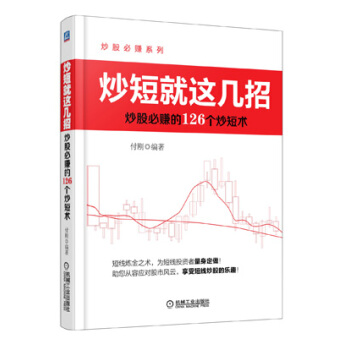
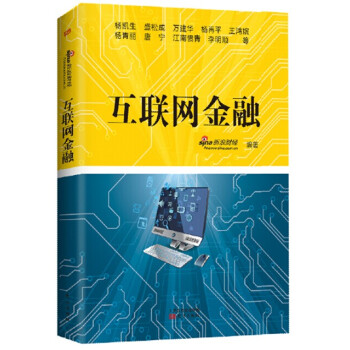
![私人银行:机构、产品与监管 [Private Banking:Institutions,Products and Regulation] pdf epub mobi 电子书 下载](https://pic.windowsfront.com/11660847/5500dda3N246a6c98.jpg)
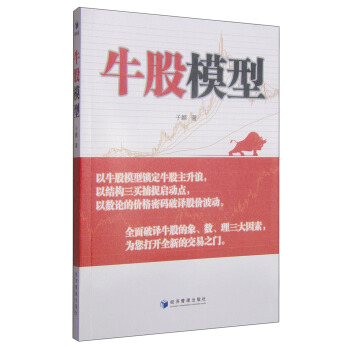


![地方政府投融资及其可持续性 [Local government investment and financing and its sustainability] pdf epub mobi 电子书 下载](https://pic.windowsfront.com/11749903/55d66a77Nfa659f7a.jpg)
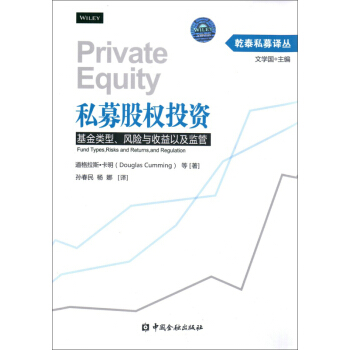

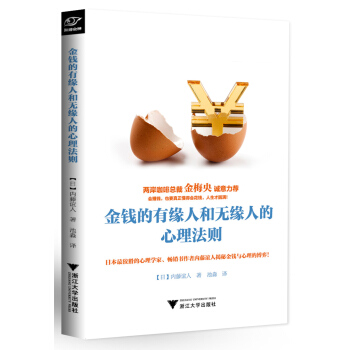
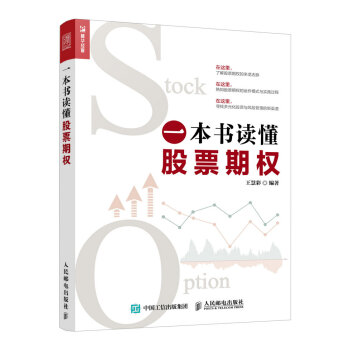
![让财富雪球滚起来:波线量价交易体系 [Accumulate Wealth Like A Snowball] pdf epub mobi 电子书 下载](https://pic.windowsfront.com/12069967/591d7df2N11fff945.jpg)
![货币银行学(第二版) [Monetary Banking] pdf epub mobi 电子书 下载](https://pic.windowsfront.com/12114908/58847a83N199d2017.jpg)




